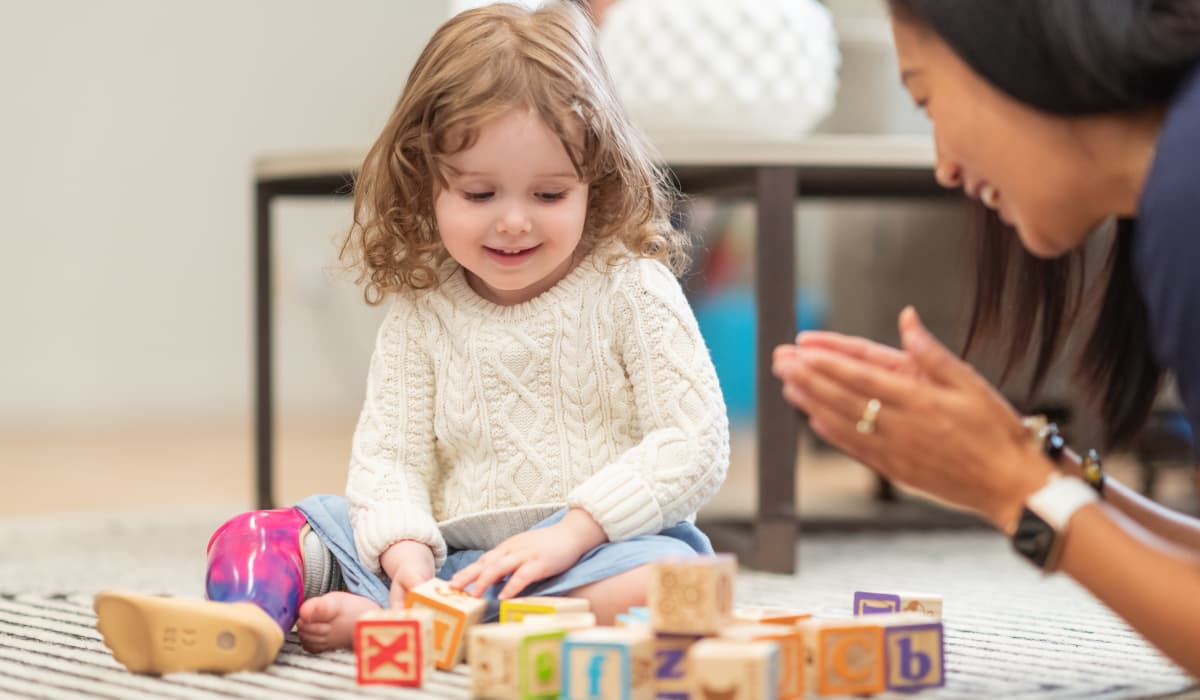The Life-changing Benefits of Sensory Toys
Discover the benefits of sensory toys for well-being and development, enhancing learning for all children.


Understanding Sensory Toys
Sensory toys are designed to stimulate the senses and can play a crucial role in enhancing the development and well-being of children, particularly those with autism or sensory processing issues.
Benefits of Sensory Toys
The benefits of sensory toys are profound, impacting various areas of child development. According to National Autism Resources, these toys can promote sensory development, cognitive growth, social and language skills, as well as fine motor skill development. Here are some key benefits:
BenefitDescriptionSensory DevelopmentEnhances sensory processing capabilities through varied textures, sounds, and sights.Cognitive DevelopmentTeaches cause-and-effect relationships and problem-solving skills.Social InteractionEncourages sharing and cooperation among children.Fine Motor SkillsImproves hand-eye coordination, dexterity, and strength.
Sensory play is foundational for children's learning, positively influencing their cognitive abilities by immersing them in sensory-rich environments [1].
Importance of Sensory Stimulation
Sensory stimulation is vital for children's overall development. Through activities involving tactile sensations, soothing sounds, and visually appealing features, sensory toys can promote relaxation and reduce anxiety [1]. Sensory-based interventions have proven effective for children facing sensory challenges, helping to calm them down and improve their focus.
Additionally, sensory play forms the foundation for essential skills later in life, including reading, writing, and math [2]. Understanding the extensive benefits of sensory toys is key for parents and caregivers looking to support children with autism or sensory processing issues. For more resources, check out sensory toys for autism and understanding sensory processing issues in autism.

Impact on Children's Development
The utilization of sensory toys has a significant impact on children's growth and development. These toys not only aid in cognitive advancement but also enhance social interactions among children.
Cognitive Development Benefits
Engaging with sensory toys fosters cognitive development by exposing children to sensory-rich environments. This type of play encourages children to process various sensory inputs, leading them to develop crucial skills such as understanding cause-and-effect relationships and anticipating sensory experiences [1]. As children interact with different textures, sounds, and visuals, their brain processes information more effectively, which is essential for learning.
Sensory toys also help improve children's ability to simulate real-world environments, which further aids in their cognitive development. Multi-sensory experiences have been shown to reinforce learning by ensuring that comprehension of information becomes robust and durable. For a detailed overview of how these toys influence development, see the table below:
Cognitive Skills EnhancedExamples of Sensory ToysCause and Effect UnderstandingBuilding blocks, action figuresAnticipation of Sensory InputsScented toys, sound-producing itemsMemory and RecallPuzzles, matching games
Social Interaction Enhancement
In addition to cognitive benefits, sensory toys play a crucial role in enhancing social interactions among children. These toys can facilitate cooperative play, promote communication skills, and help children express their feelings better. Engaging in sensory play encourages children to share toys, negotiate roles, and work together towards a common goal, thus enriching their social skills.
Through group activities involving sensory toys, children can learn valuable lessons about empathy, teamwork, and conflict resolution. Exposure to various sensory experiences allows them to communicate their thoughts and emotions more effectively, a fundamental aspect of social development. The table below highlights some key benefits:
Social Skills EnhancedRole of Sensory ToysCommunication SkillsEncouraging verbal and non-verbal interactionsEmpathy and SharingParticipating in group play with shared toysConflict ResolutionLearning to negotiate and solve disagreements
By understanding the impact of sensory toys on cognitive and social development, caregivers can better support children's growth, particularly for those navigating conditions like autism. For more insights into specific benefits for children with autism, explore our article on sensory toys for autism.

Types of Sensory Toys
Sensory toys are specifically designed to engage one or more of the senses—sight, touch, sound, and smell—providing important sensory experiences for children, especially those on the autism spectrum. These toys can foster sensory development, cognitive growth, and emotional regulation. In this section, various types of sensory toys are discussed: tactile, auditory, and visual.
Tactile Sensory Toys
Tactile sensory toys engage a child's sense of touch. They are designed to provide different textures and shapes that stimulate the fingertips and help develop fine motor skills. Examples of tactile toys include:
Tactile Toy TypeBenefitsSensory BallsImprove sensory perception and hand-eye coordinationFidget SpinnersHelp channel excess energy, improving focusSquishy ToysProvide calming effects and sensory relief
Tactile sensory input is important as it can help children manage their sensory needs and feel more grounded in their environment.
Auditory Sensory Toys
Auditory sensory toys stimulate the sense of hearing and can help cultivate an understanding of sound. These toys can encourage verbal development and enhance communication skills. Common auditory sensory toys include:
Auditory Toy TypeBenefitsMusical InstrumentsEncourage creativity and auditory explorationSound BoxesHelp with cause-and-effect understandingTalking ToysPromote social interaction and language development
Auditory stimulation can improve attention spans, reduce anxiety, and enhance a child's ability to focus on tasks.
Visual Sensory Toys
Visual sensory toys focus on engaging a child’s sense of sight. These toys often include bright colors, lights, and moving components that captivate attention. Examples of visual sensory toys include:
Visual Toy TypeBenefitsLight-Up ToysEnhance visual tracking and engagementColor-Changing BallsStimulate interest and visual perceptionKaleidoscopesEncourage creativity and color recognition
Visual stimulation plays a significant role in fostering cognitive development by encouraging observation skills and exploration.
Engaging children with various sensory toys can support their developmental needs and provide essential sensory input. For more information on specific benefits of these toys, check out our resources on sensory toys for autism and understanding sensory processing issues in autism.

Use in Specific Conditions
Benefits for Children with Autism
Sensory toys play a significant role in supporting children with autism. These specially designed toys can stimulate one or more senses, helping children on the spectrum to remain calm and engage with their surroundings [3]. The use of sensory toys is part of a larger strategy to enhance focus, reduce anxiety, and improve overall well-being.
Research suggests that sensory-based interventions can be beneficial for children with autism, as they allow for an enjoyable way to engage the child's preferred sense. Toys such as spinners, chew toys, and hand fidgets not only provide sensory engagement but also promote self-awareness and aid in managing sensory overload and calming anxiety [4].
BenefitDescriptionCalming EffectSensory toys help children with autism relax during overwhelming situations.Improved FocusEngaging with sensory toys can enhance attention and concentration.Emotional RegulationToys provide a way for children to express their feelings and reduce stress.Enhanced Sensory ProcessingSensory toys encourage positive sensory experiences, improving overall sensory integration.
Benefits for Sensory Processing Issues
Children experiencing sensory processing issues can also benefit from sensory toys. These toys are specifically designed to offer various tactile sensations, soothing sounds, and visual features that promote relaxation and reduce anxiety [1]. By helping children engage their senses in safe and enjoyable ways, sensory toys can significantly contribute to managing their sensory needs.
The effectiveness of sensory toys in enhancing focus and concentration is recognized by educators and occupational therapists alike. These professionals recommend integrating sensory toys into daily routines, noting that they can lead to a more productive learning environment and better engagement in various activities [5].
BenefitDescriptionEnhanced FocusSensory toys can help children concentrate by providing much-needed sensory input.Stress ReductionThese toys promote relaxation, effectively easing anxiety levels.Improved Classroom BehaviorUtilizing sensory toys can create a calmer, more focused classroom environment.Individualized Sensory StimulationChildren can explore and express their sensory preferences through varied toy options.
For children with autism and those facing challenges with sensory processing, the benefits of sensory toys are immense. They provide meaningful opportunities for engagement, stimulation, and relaxation that can dramatically enhance well-being and daily functioning. For specific recommendations, explore our resources on sensory toys for autism and understanding sensory processing issues in autism.

Incorporating Sensory Toys
Integrating sensory toys into daily activities can have a profound impact on children's engagement, focus, and emotional well-being. Here are some effective methods for incorporating these tools throughout the day.
Daily Routines Integration
Sensory toys can be seamlessly woven into everyday routines, making them valuable tools for enhancing children's experiences. Incorporating sensory toys can assist during various activities, such as:
Routine ActivityBenefits of Sensory ToysMorning RoutinesHelps children wake up and focus, creating a smoother start to the day. (Spark & Wow)MealtimesEncourages engagement and helps children stay calm during meals.BedtimeCreates a calming environment to ease the transition to sleep.
By using sensory toys during these activities, children can develop a stronger sense of routine and comfort while also benefiting from sensory stimulation.
Focus Enhancement Techniques
In addition to daily routines, sensory toys can improve concentration and focus, particularly for children who struggle in typical environments like classrooms. Below are focus enhancement techniques that incorporate sensory toys:
TechniqueDescriptionFidget ToysDifferent shapes, textures, and colors can help maintain focus and reduce anxiety. (Enabling Devices)Multi-sensory ExperiencesThese toys can enhance cognitive development by simulating real-world environments for learning.Engagement Through PlaySocialization activities, like taking turns with drums or bubble-blowing, can foster cooperative play. (Enabling Devices)
Implementing these techniques helps children build awareness of their surroundings and enhances their ability to concentrate in various real-life situations. Using sensory toys not only aids in improving focus but also contributes greatly to their overall developmental journey. For further insights, explore our resources on sensory toys for autism and creating a sensory-friendly environment.
Advancing Learning with Sensory Play
Sensory play plays a pivotal role in childhood development, offering numerous benefits that enhance learning and engagement. By providing children with opportunities to interact with various textures, sounds, and visuals, sensory toys facilitate exploration and cognitive stimulation.
Cognitive Stimulation Strategies
Engaging in sensory play can significantly enhance cognitive development. By exposing children to sensory-rich environments, they can develop vital skills such as problem-solving and creativity. Sensory activities allow for open-ended play, which fosters self-regulation and exploration, essential components of learning [1].
StrategyBenefitsMulti-sensory ActivitiesEngages multiple senses, enhancing memory retentionOpen-ended PlayEncourages creativity and independent thinkingProblem-solving GamesDevelops critical thinking and decision-making skills
Utilizing these strategies through the use of sensory toys for autism can create an enriching learning environment that addresses various developmental needs.
Educational Toy Evolution
The evolution of educational toys has been remarkable, particularly in the context of promoting sensory engagement. These toys are now designed not only with traditional methods in mind but also with advanced interactive features to create dynamic learning experiences. The integration of multi-sensory approaches in educational toy design has shown to elevate user engagement, making learning more enjoyable and effective [6].
Type of Educational ToyCharacteristicsExamplesTraditional ToysFocus on basic skills; often tactileBuilding blocks, puzzlesInteractive ToysIncorporate sensors, sounds, and lightsElectronic learning toolsSensory ToysDesigned for tactile, auditory, and visual inputFidget spinners, sensory balls
The advancements in educational toys reflect a growing understanding of how children learn best. Incorporating sensory elements into play can help children with various learning styles, including those affected by conditions such as autism. For more information on specific toys designed for different needs, consider looking into baby sensory toys for autism and free sensory toys for autism.
In conclusion, understanding the benefits of sensory play and the evolution of educational toys can greatly influence how children engage with their learning environments. Sensory toys serve not only as tools for fun but also as crucial resources for cognitive and developmental advancement.
Recent articles

ABA Techniques for Picky Eaters: Building Better Habits

How Social School Support Makes School Transitions Easier for Children
